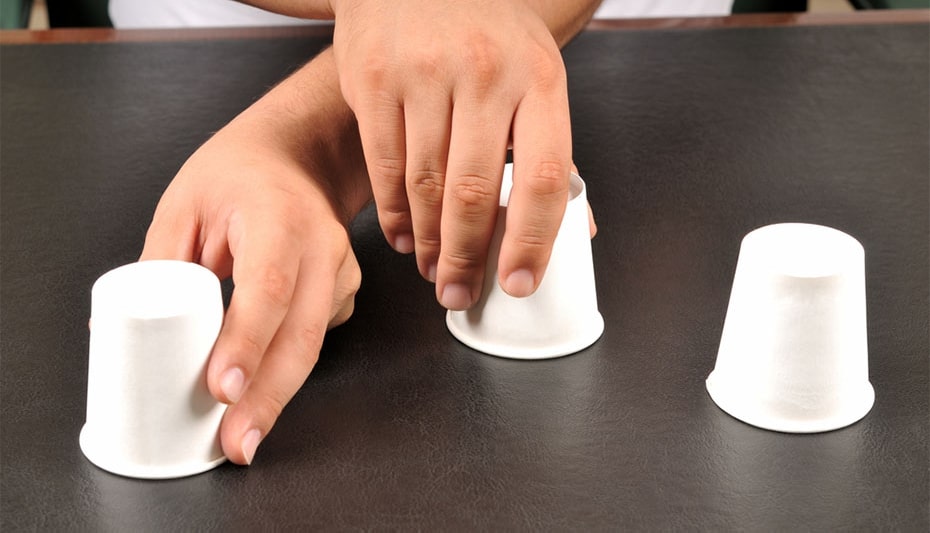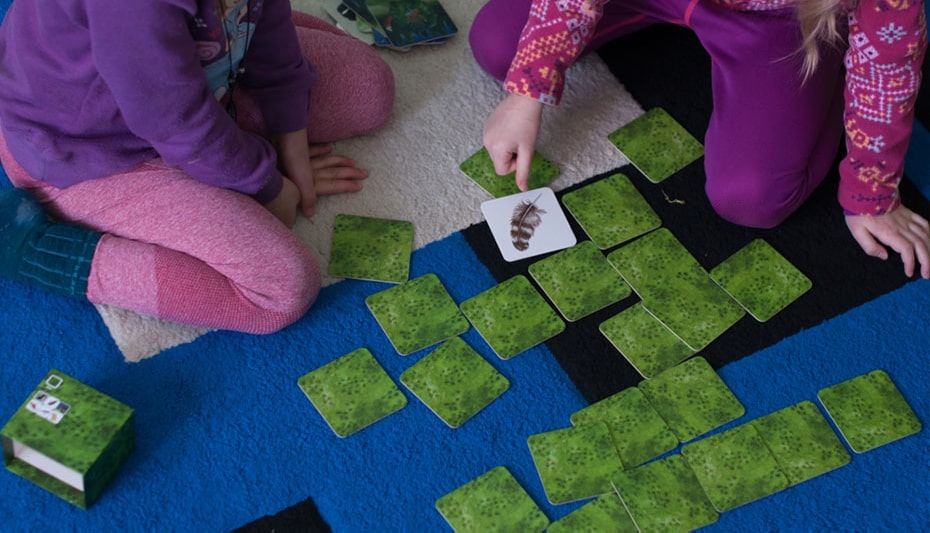
11 working memory games for kids aged 1-7
Working memory plays a key role in your child’s ability to learn effectively.
Have you ever given your children a few chores or tasks, only to find out they’ve forgotten to do some of them? Or perhaps your little one has a remarkable ability to recall events or follow given instructions correctly.
The ability to recall and follow instructions is closely linked to an executive function of the brain, known as working memory.
Working memory plays a major role in how a child processes, uses, and remembers information on a daily basis. In simple terms, it is the ability to retain in mind the information a child needs to complete a task.
However, when working memory is not strongly developed, the ability to remember information may be limited. Therefore, working memory plays a key role in your child’s ability to learn effectively, and in his/her journey as a lifelong learner.
How does working memory impact learning in children?
Research conducted by Susan E. Gathercole and Tracy P. Alloway from the University of Durham, and published in the Journal of Professional Association for Teachers of Students with Specific Learning Difficulties, shows a strong link between children’s working memory capacity and their learning achievements in areas such as literacy, language, and mathematics.
To better understand the application of working memory in a child’s daily life, let’s look at two simple examples.
Example 1: You ask your preschooler to change his/her clothes, wash his/her hands, and tell his/her sibling it’s time for dinner. Your child may only do one task or forget which one he/she is supposed to do first, or what he/she had to do next.
Example 2: You ask your primary schooler to add 2 and 2 mentally and subtract 1 from the total. Your child gives the wrong answer.
In both examples, your child’s stumbling block is most probably due to working memory limitations.
Think of working memory as a small table, where you store all the ideas and information you need for a particular task. This “table” has space constraints and as you add more and more information, it becomes full. When there is no more space left and you try to add more information, items will fall off the table, only to be forgotten.
So, when a child forgets to do something you’ve asked him/her to do, it’s likely that his/her working memory “table” has crowded up with other random thoughts, leaving the original thought to fall off and get lost.
The good news is that you can start honing your child’s working memory beginning from their early years. You can do this through fun games that you can easily incorporate into your little one’s daily routine.
11 Fun memory games for kids
Just like how exercise and physical play strengthen the body, studies have shown that playing these games will help train and strengthen your child’s working memory.
These memory games for kids are also a great way to bond with your little ones, so remember to have fun while playing them!
For Toddlers (Ages 1-3):
1. Hokey Pokey and other action songs
Songs with movements are a great way to help toddlers learn and remember information. Such songs require children to pay attention to the words, remember them, and use the song to guide their actions.
For example, the song “Hokey Pokey” goes:
You put your left arm in
your left arm out
in, out, in, out
you shake it all about
You do the hokey pokey
and you turn around
that's what it's all about
The song is a great way for toddlers to learn to listen to directions and follow them. It also teaches body parts, as well as left/right discrimination.
2. Simon Says
Do you remember playing Simon Says as a kid? Well, it turns out that this simple game can help strengthen your child’s auditory and visual processing, as well as attention skills.
In this game, children usually gather around an adult who gives instructions preceded by the words, "Simon says." For example:
"Simon says touch your head!"
"Simon says jump!"
"Simon says hop!"
The children need to follow the instructions unless the adult leaves out "Simon says,"—in which case, the child who continued following the instructions is “out.”
For older toddlers, you can add multiple instructions to further stimulate their working memory. For example, “Simon says, touch your head, touch your toes and clap your hands twice.”
3. Three Cups
This concentration game is great for training little brains. Line up three paper cups. Place a small object (a coin, button, or better still, a treat!) under one cup. While your little one watches closely, shuffle the cups into new positions.
Ask your child to guess where the object is. You will want to adjust the speed at which you shuffle the cups depending on the age and ability of your child.
This game helps to hone your child’s observation skills and strengthens visual memory. Your child would need to remember under which cup the object was placed, and then focus and pay attention to the moving cups, all of which involve the use of working memory.
For Preschoolers (Ages 4-5)
4. Spot the Difference
This is a really simple game which does not require any additional resources.
There are many ways you can play it. Ask your child to close his/her eyes. Rearrange something about yourself. For example, take off/put on your glasses or take off one earring.
Ask your child to open his or her eyes and figure out what has changed.
Or, if you are at home, ask your child to leave the room, rearrange items in the room, and tell him/her to figure out the difference.
This game is quite effective for the development of visual memory and attention skills. As your child grows older, you can play spot the difference using cards that are similar but have minor differences in detail.
5. The Tray Game
Start by putting five simple objects on a tray, such as a pencil, pen, eraser, small toy, coin, or ornament. Ask your child to observe them for a couple of minutes.
Now cover the tray or take it out of sight. Give your child a pencil and paper and ask him/her to write down all of the objects he/she can remember.
This game helps develop your child’s visual memory and, in turn, stimulates working memory. Children love this game and it can be played with additional or fewer items depending on your child’s age and ability.
6. Under the Cups

This game is a fun version of the card game, Memory. You will need an even number of paper cups and an equal number of treats to hide under them, like candy and chocolate bars (two of each type). The more cups and treats, the better!
Shuffle the treats and arrange them in a rectangular/square grid pattern on a table. Cover them with the cups, and your game is ready.
The children take turns in turning over a pair of cups. If the treats underneath match, the player can take the cups away, claim the treats as his/her own, and get another turn. If the treats do not match, the player must carefully replace the cups and play passes on to the next player.
The player with the most amount of treats/objects in the end is the winner.
If only one child is playing, you can substitute treats with coins, for greater motivation, so whatever your child wins can be added to his/her piggy bank!
This game is a good way to train kids’ memory. It involves being mindful, focussing, and remembering the treat hidden under each cup.
7. Chinese Whispers or Telephone Game

Haven’t we all played Chinese Whispers (or the Telephone game) when we were kids?
Everyone sits in a circle, then one person whispers a sentence into the ear of the person sitting next to him/her. That person has only one chance to listen and must repeat what he/she hears to the next person.
This continues until the last person, who then has to repeat out loud what he/she has heard. Usually the original and final versions are poles apart, leading to lots of fun and giggles.
This continues until the last person, who then has to repeat out loud what he/she has heard. Usually the original and final versions are poles apart, leading to lots of fun and giggles.
8. I Went Shopping game
I Went Shopping is a classic memory game which can be played anywhere, be it while waiting for food to arrive at a restaurant or a long car journey!
The first player starts the game by saying, for example, “I went shopping and bought an apple...”
The second player continues by adding an item to the list, “I went shopping and bought an apple and a banana…”
As play continues, the list gets longer and longer. Keep going until someone can’t remember the list or makes a mistake.
The child needs to focus and listen carefully to the existing list, store it in his/her memory, add an item to the list and recite this new sentence without making a mistake, all of which are great for his/her auditory and working memory skills!
For Primary Schoolers (Ages 6-7)
9. Concentration Game
This game involves a lot of music and rhythm and is sure to perk up your little ones. The family can sit in a circle and each is given a designated number, starting with number one. The more players, the better!
You then start a song by slapping your thighs twice, then clapping your hands twice and saying:
- Concentration (slap slap clap clap)
- Are you ready? (slap slap clap clap)
- If - so (slap slap clap clap)
- Let’s - go! (slap slap clap clap)
- Then player one, continuing the rhythm, says her own number twice followed by another number in the circle.
- For example: 1, 1, 4, 4 (slap slap clap clap), which means Player 1 is calling out to Player 4 to play next
- Player 4 then does the same, starting with their own number and following with someone else's:
- 4, 4, 2, 2 (slap slap clap clap), which then means Player 4 has called on Player 2 to play next
Anybody who makes a mistake or fails to keep the rhythm is out but remains in the circle, making it more difficult for the other players, who must remember not to use the numbers of the people who are out.
You can add more fun to the game by speeding up the rhythm. Besides the merriment, this game is a great way to hone listening and concentration skills, too.
10. Memory or Pairs Card Game

Memory card
This game is all about memory and is played with cards. If you use playing cards, it’s even better because children will also have to remember the number/letter apart from colour and design.
Here is how it is played:
- Shuffle and spread all the cards out face down on the table, preferably in grid form.
- Each player turns over two cards, looking for a matching pair.
- If the cards match, the player keeps the cards and gets another turn. If not, the player replaces them face down on the table, and play passes on to the next player.
- When there are no cards left, the player with the most matching pairs is the winner
This game is a good exercise in memory training. It sharpens the child’s attention skills because it involves focus and keeping in mind the exact positions of the cards.
11. “I Went on Holiday...” Game
I Went On Holiday is a memory game you can play with your kids practically anywhere, and especially when they are bored. Since you need some geographical knowledge, this game is more suited for older children.
To start the game, the first player thinks of a place beginning with the letter A and then says, for example, “I went on holiday to Africa.”
The next player repeats the sentence and adds a place beginning with B. So, for example, he/she would say, “I went on holiday to Africa and Belgium…”
The next player adds a place beginning with C. Play continues until someone makes a mistake, or you reach the end of the alphabet!
So basically, the child is required to remember the places which have already been mentioned, plus add a new place with the next letter which is great for sharpening of auditory, memory, cognitive and attention skills.
General Tips to Develop Working Memory
In addition to these memory games for kids, keep these simple tips in mind that can also help stimulate and develop your little one’s working memory:
- Make your instructions brief and simple: Split up an over long instruction into manageable tasks. For example, instead of saying, “Take off your socks and shoes, put your clothes in the laundry and wash your hands,” you could say, “Take off your socks and shoes, and let Mummy know. I’ll tell you what to do next.” Also, it is good practice to make little children repeat the instructions they have just heard.
- Read with your child and encourage him/her to read: Reading is an effective way of improving working memory. Your child is required to sit still and focus, which is great for his/her concentration and attention span. As the story progresses, your child is also required to remember the sequence of events, which requires the use of working memory. Where academics is involved, active reading, which involves highlighting or underlining important information, is a great way to hone your child’s working memory skills, too.
- Keeping a diary helps: For older children, you could encourage them to keep a diary. Recalling what happened through the day and writing them down will help strengthen your child’s working memory.

